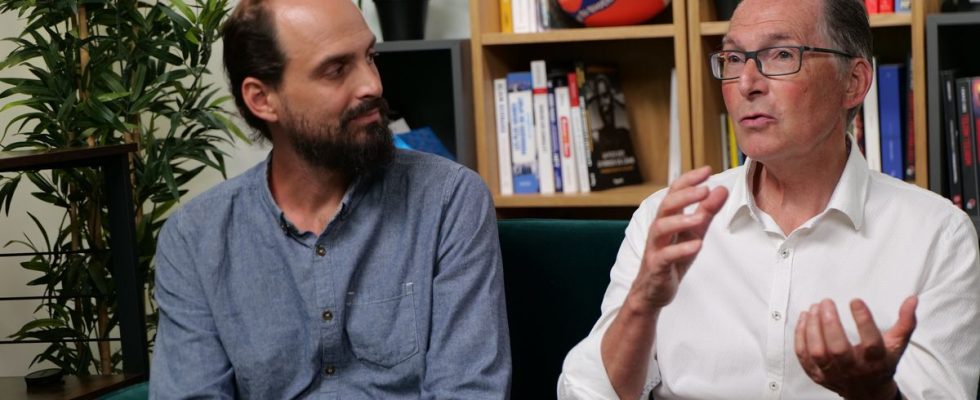One was initiated into shamanism in Peru, the other is a cardiologist and professor emeritus of pharmacology at Paris-Cité University. Arthur Laurent and his father, Stéphane Laurent, confronted for 20 minutes two visions of medicine. In The Shaman and the Doctor, published in September by Odile Jacob, the father and son debate healing practices. With their passion for plants in common, they renew the dialogue in the tradition of Monk and philosopherwritten by Matthieu Ricard and Jean-François Revel.
What are the differences between the two medicines? Conventional medicine treats with drugs, surgery, etc., and “follows recommendations, each with their level of evidence, their level of proof,” recalls Stéphane Laurent. It’s called the “gold standard of methodology”, which seeks to show statistical proof of the effectiveness of a treatment.
Traditional medicine is first located in a place, the Amazonian forest, underlines Arthur Laurent, and over a more or less long period, treats with plants, what he calls “the spirit of the plants”. The doctor in social sciences has been training in shamanic medicine for fifteen years with the Shipibo, an indigenous people of the Amazon, but he also participated in a shamanic ceremony in Mexico.
Ayahuasca, banned in France since 2005
At the heart of shamanic practices is the taking of ayahuasca, a beverage made from a vine, considered a drug and banned in France since 2005 due to the risks of neurotoxicity and addiction. In shamanic medicine, it is not a medicine as one might quickly think, the drink brings the shaman into a modified state of consciousness and, with the songs created during the ceremony, allows “to obtain precise diagnostic information for the patient’s illness,” explains Arthur Laurent.
Both insist that this concoction is banned in France. In Shipibo medicine, ayahuasca is “one plant among hundreds”, it is “inconceivable to be able to use this beverage outside of a context of guidance by a specialist”, adds Arthur Laurent, who has already paid the price of a bad experience.
“Frictions at the beginning of writing”
If the link was never broken, the dialogue between father and son, and two visions of medicine, was far from obvious. “There was friction at the start of writing the book because we had to understand how everyone thought,” relates the doctor. But both, driven by the same desire to care, wanted to dialogue and “seek to understand each other”.
“On a personal level, Arthur went across the Atlantic for years, he moved away intellectually,” continues the pharmacologist. I needed to go find a connection with him. And I think that this discussion, this book, it reconnected us. » After facing an outcry from those close to him, Arthur Laurent believes that he changed his approach “to arrive at something more personal, less in the great French debate of ideas, but rather in experience, to say how much this medicine has helped me.” With time, the conversation was able to take place.

